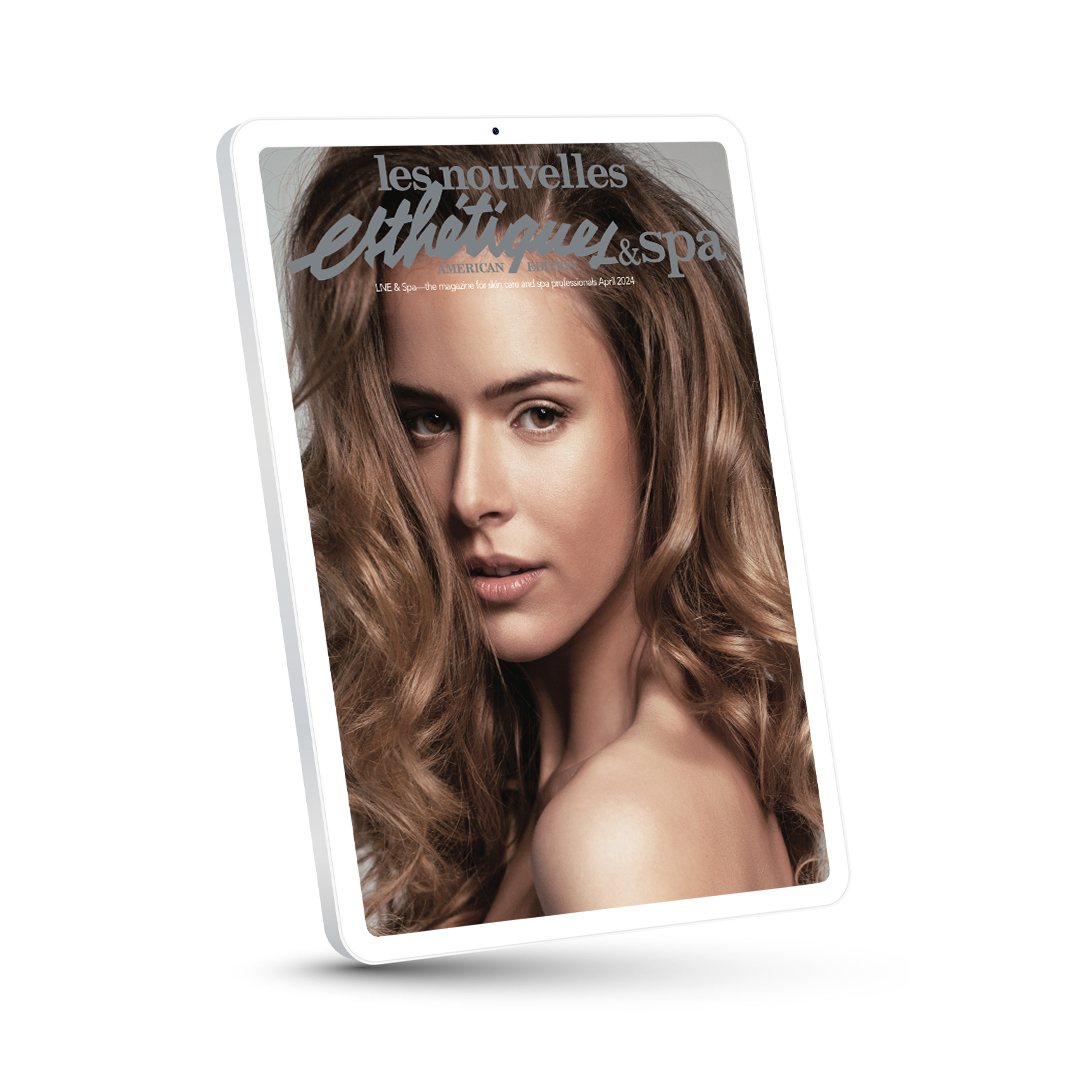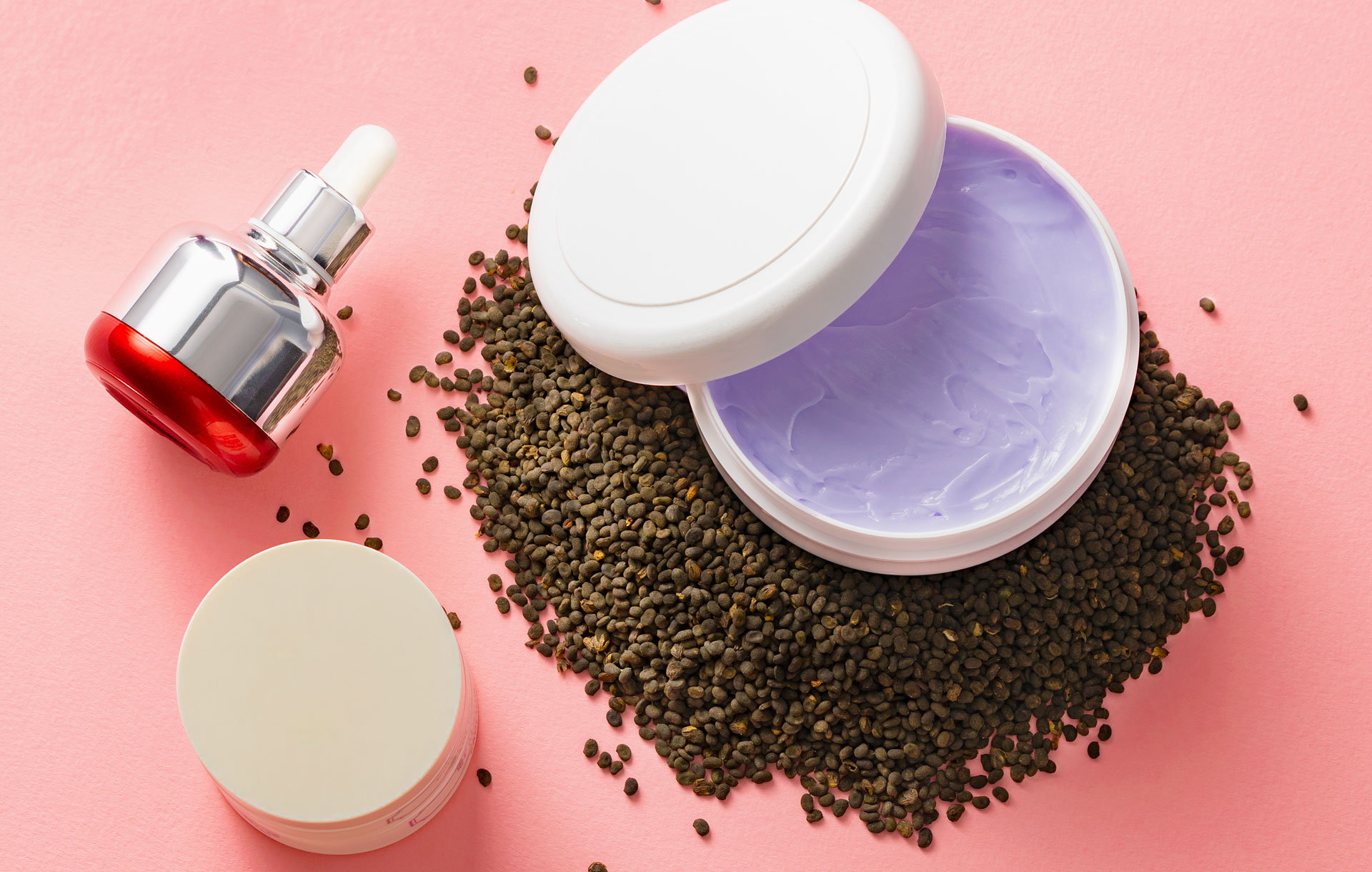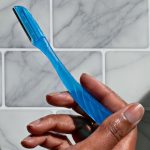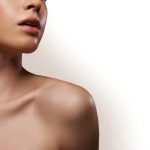Getting results with Bakuchiol
In the ever-evolving industry of skincare, where purveyors of goods are looking to capitalize on the multi-billion dollar anti-aging cosmeceuticals market, we often find ourselves sifting through “buzzwords,” scientific jargon and claims, and new ingredients that, more often than not, come without the crucial scientific evidence needed for proof of efficacy. On occasion, however, as product formulators, we get new raw material ingredients that not only galvanize our industry, but actually have solid evidence-based data to support their usage on skin. Enter Bakuchiol, the plant derived molecule being touted as the true retinol alternative. So, what is this “magical” ingredient, celebrated and glorified across all beauty sectors, all about? Let’s start at the top.
Bakuchiol is an active constituent (meroterpene phenol, in this case) found within the leaves and seeds of the botanical species known as Psoralea corylifolia, or Babchi, as it’s commonly known in the Asian countries where it grows wild. In fact, this plant species has been used for hundreds of years, if not longer, in traditional eastern medicine cultures to treat a variety of systemic and cutaneous ailments. Its therapeutic value is undeniable as it possesses numerous pharmacological properties. So, it ultimately begs the question – is Bakuchiol a viable alternative to Retinol, and can it achieve the same clinical objectives?
Retinol is a natural, alcohol form of vitamin A in the family of molecules known as retinoids. Other common natural retinoids used in skin care are Retinyl Palmitate (ester form), Retinaldehyde (aldehyde form), and Retinoic Acid (the active acid form), with each maintaining their unique molecular characteristics, pharmacokinetics, and potency. These forms of vitamin A have been used extensively since the 1940’s to treat a variety of skin conditions, including acne and aging, and they have an abundance of data and statistics proving their therapeutic potential. Vitamin A, and its analogues, are essential cellular “nutrients” that play significant roles in cellular growth and differentiation. In fact, aging can largely be considered a nutritional deficiency, as the suns UV rays rapidly deplete the vitamin A levels in our skin. They are true anti-aging workhorses! With the evidence clearly in favor of Retinols efficacy, what problems would present that would warrant the usage of an alternative?
The unfortunate downstream effects of using retinoids (with some exceptions) can be irritation, excess peeling, dryness, and enhanced sun sensitivity. All too often, retinoids are off the table for sensitive and hyperreactive skin types. In addition, your stronger pharmaceutical acid forms of vitamin A can deleteriously impact the integrity of your skin’s protective barrier, leading to a vicious cycle of sub-clinical inflammation which is, by definition, pro-aging.
While a few active raw materials presented to cosmetic formulators have made the bold claim of being retinol alternatives, none of these have come close to the retinol-like characteristics of Bakuchiol. With close scrutiny, let’s analyze the evidence.
While Bakuchiols molecular structure is not identical to that of Retinols, they do have similar behavioral characteristics. From the perspective of achieving the same clinical outcomes as retinol, without the inherent negatives, Bakuchiol seems to stack up. When we look at an aged face, we see the hallmark signs of lines and wrinkles, mottled pigmentation, loss of elasticity, and an uneven skin tone. The goal of any effective anti-aging ingredient, and something Retinol is known to do well, is reverting these extrinsic symptoms back to a more youthful state. In a double-blind 2018 clinical study published in the British Journal of Dermatology, a comparative analysis was performed, with the participants either using 0.5 percent Retinol on their face, or 0.5 percent Bakuchiol. After 12 weeks, measurements were taken to assess each molecules ability to treat these cutaneous signs of aging. Surprisingly, in virtually all measurements taken, both Bakuchiol and Retinol had remarkable clinical efficacy in treating signs of photodamage, with no statistically significant difference between the two. In layman’s terms, that means they achieved the exact same performance objectives. However, unlike the Retinol group that experienced stinging, erythema, and irritation, the Bakuchiol group presented with none of these clinical adverse effects.
While a visual assessment of efficacy (when using these ingredients, what will consumers SEE when they look in the mirror) is often considered paramount in clinical studies, alternative types of testing do exist that exploit what an active ingredients true potential is. We know Bakuchiol achieves the same effects as Retinol from a visual and extrinsic perspective, but the real question is how it measures up from a genetic perspective. Not widely used in mass produce commercial skincare, DNA microarrays, or quantitative polymerase chain reaction (qPCR) tests can show us how a single molecule, or group of molecules, influences the genes in our cells. This is the new gold standard in proving an ingredient’s worth – highlighting what genes it turns on and which genes it can turn off. In order to establish Bakuchiols true retinollike characteristics, it was put through this type of rigorous testing and the results were published in a 2014 edition of the International Journal of Cosmetic Science. What did the data show? While Bakuchiol and Retinol do not have the same molecular structure, they do have an almost identical genetic footprint. (2) Modulation of key retinoid binding and metabolizing genes is Bakuchiols strong suit, however, not all retinoid binding genes were activated in the study. The gene expression of true retinol includes activation of retinoic acid binding proteins, which gives these forms of Vitamin A their inherent toxicity and irritation potential. Bakuchiol, cleverly, bypassed the expression of these genes in particular. This upregulation (and downregulation) of gene expression, combined with genes associated with key structural proteins such as collagen, elastin, dermo-epidermal junction (DEJ) genes, hyaluronic acid and aquaporin genes, and other essential genes associated with youthful skin, are what makes Bakuchiol a TRUE functional analogue of retinol. When one needs a clear and definitive explanation of an ingredient’s therapeutic potential, you cannot get more concrete evidence than a gene expression analysis.
However, healthy skin is more than just a robust production of skin proteins to reduce lines and wrinkles, as there are many complex molecular and biochemical pathways that contribute to tissue (skin in this case) behaving in a more youthful manner. Bakuchiol has proven to target all main contributing pathways linked to aging from oxidative stress, inflammation, mitochondrial cell energy production, MMP regulation, and protection against UV induced skin damage. In fact, Bakuchiol outperformed the antioxidant and anti-inflammatory capacity of commodity raw materials known to be gold standards in this category.
Can it get any better? The science suggests it can. Bakuchiol has also shown significant power in treating acneic skin types, not only from its anti-inflammatory capacity, but its ability to regulate sebum output, modify the microbial ecosystem, downregulate localize hormone levels, and reduce hyperkeratinization. (3) And, finally, to further highlight this ingredients protective potential, it has proven to stop the proliferation of cutaneous malignancies such as skin cancer.
While Bakuchiol is a relatively new raw material available to us in skincare, it is an extremely promising active with a wealth of benefits for the skin. As more research is devoted to exploring its therapeutic potential, for now, we can confidently say that, while not identical to Retinol (nutritionally and molecularly), Bakuchiol has proven to be a worthy competitor, whether used on its own or to potentiate Retinols performance when combined. The hype is certainly justified.











